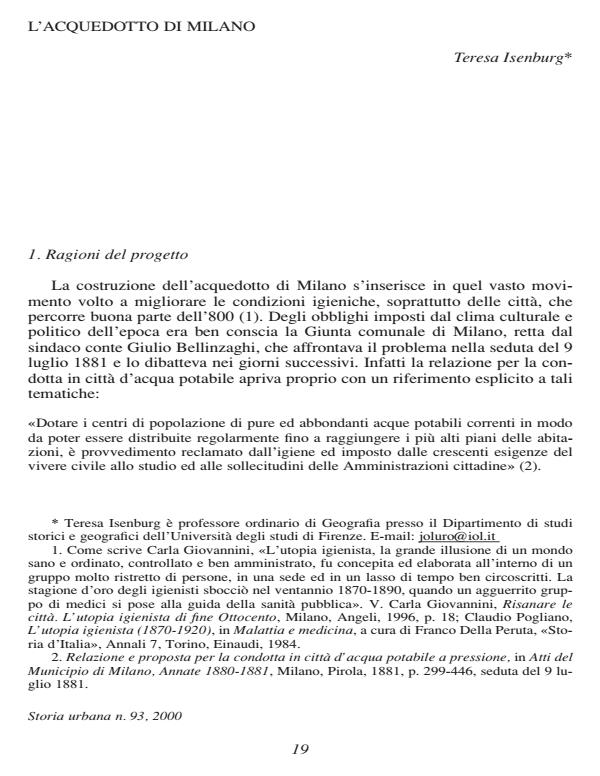L'acquedotto di Milano
Titolo Rivista STORIA URBANA
Autori/Curatori Teresa Isenburg
Anno di pubblicazione 1 Fascicolo 2000/93 Lingua Italiano
Numero pagine 11 P. Dimensione file 53 KB
DOI
Il DOI è il codice a barre della proprietà intellettuale: per saperne di più
clicca qui
Qui sotto puoi vedere in anteprima la prima pagina di questo articolo.
Se questo articolo ti interessa, lo puoi acquistare (e scaricare in formato pdf) seguendo le facili indicazioni per acquistare il download credit. Acquista Download Credits per scaricare questo Articolo in formato PDF

FrancoAngeli è membro della Publishers International Linking Association, Inc (PILA)associazione indipendente e non profit per facilitare (attraverso i servizi tecnologici implementati da CrossRef.org) l’accesso degli studiosi ai contenuti digitali nelle pubblicazioni professionali e scientifiche
For about twenty years in the middle of the nineteenth century, the Milan Town Council discussed the problem of providing the rapidly expanding town with abundant and good quality drinking water. Various solutions were foreseen, all based on the assumption that river water could be used, but these projects fell through due to technical difficulties and the opposition of consumers. In 1888, water began to be drawn from the urban subsoil. This was to be a temporary option, but in fact, it became a definitive solution. Up to the beginning of this century, the Town Council ran this service as economically as possible, but recently, regulations have been passed requiring an organization based on the criteria of cost-effectiveness and efficiency.;
Teresa Isenburg, L'acquedotto di Milano in "STORIA URBANA " 93/2000, pp , DOI: